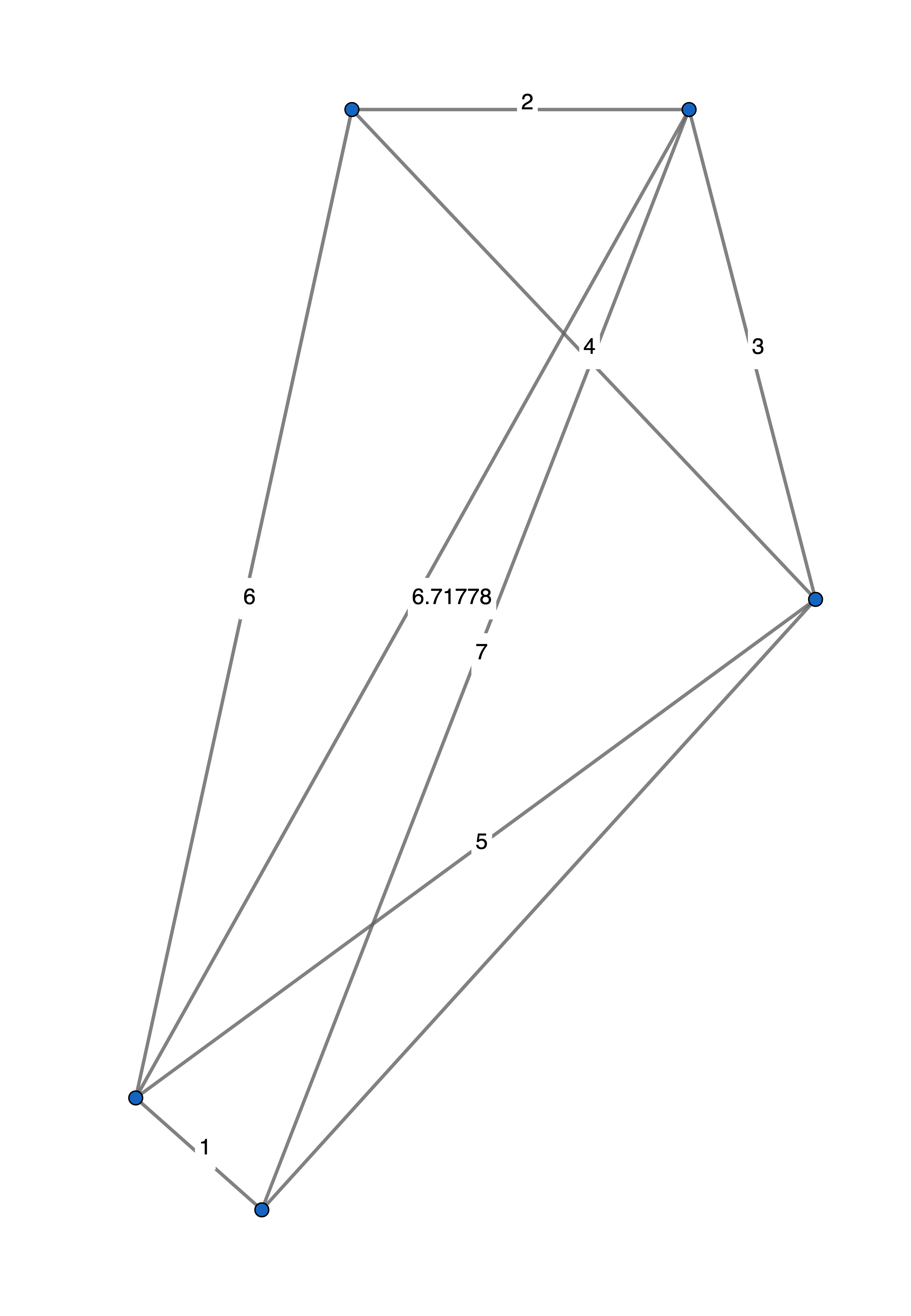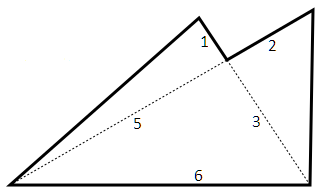A pentagon can be used to measure 10 distances - one distance between each pair of its 5 vertices. Can you find a pentagon that can measure every integer distance from 1 to 7, inclusive?
3 Answers
The answer is
This can be proven by
computing the length of the diagonal determined by the 2-3-4 and 4-5-6 triangles as $$\sqrt{\frac{983+45\sqrt{105}}{32}}\approx6.71778$$ using the Cayley-Menger determinant, which is strictly between 6 and 8, thereby satisfying the triangle inequality for the sides of lengths 1 and 7.
-
1$\begingroup$ Very nice work! Do you think it's possible to add distance 8? $\endgroup$ Commented Jul 22, 2022 at 14:27
-
3$\begingroup$ @DmitryKamenetsky No because the segment of length 1 together with the 3 vertices not on that segment form 3 triangles with 3 distinct pairs of segments. Each pair can have at most 1 integral length by the triangle inequality (unless we permit degenerate pentagons), so we can have at most 10 - 3 = 7 integral lengths. $\endgroup$– noedneCommented Jul 22, 2022 at 14:31
-
25$\begingroup$ Here's a degenerate pentagon that can count up to 9: i.sstatic.net/slrz7.png $\endgroup$– BassCommented Jul 22, 2022 at 16:39
-
3$\begingroup$ The proof isn't quite convincing though: having three vertices on the same line doesn't necessarily make a pentagon degenerate. $\endgroup$– BassCommented Jul 23, 2022 at 23:40
-
2$\begingroup$ @Bass You're right, that only holds for convex pentagons. $\endgroup$– noedneCommented Jul 24, 2022 at 0:17
A possibly more elegant solution for 1..7 if we don't insist on a convex pentagon.
-
-
$\begingroup$ Sriram Sathyamoorthy comments: There are quite a few answers if we are not constrained by a convex pentagon. $\endgroup$ Commented Sep 9, 2022 at 7:25
-
1$\begingroup$ That is true. For instance the figure above can be seen as a quadrilateral split along the diagonals, with one sector removed. Any other sector could be removed instead. I chose this one for purely esthetic reasons. $\endgroup$ Commented Sep 9, 2022 at 7:32
I first drew the lines 7, 6 and 5, then connected the ends with 4 and 3, then calculated the length of the top line, which turned out to be 2.583. $1 + 2 > 2.583$, so 1 and 2 can fit on top.




1and2then you can roll the pentagon on its side and measure3? $\endgroup$